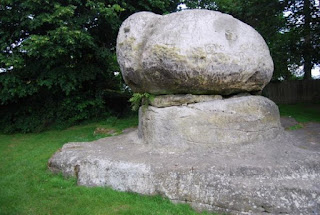The company have obviously improved the yeast strain, as although the beer is still bottle-conditioned, it poured bright virtually right down to the last drop. I remember drinking White Shield back in my late teens, when pouring the beer was a real art; especially if you wanted a clear beer in your glass. Back then there was always a much thicker, and often more looser, layer of yeast sitting at the bottom of the bottle, and if the beer was particularly lively, your chances of ending up with a bright beer were virtually nil.
The improvements which enable today’s White Shield to be poured bright are down to the use of different yeast strains for primary and secondary fermentation. A yeast which drops to the bottom of the bottle and then stays there, forming a thin tight layer, has obviously been selected, and it reminds me of another famous bottle-conditioned beer which uses a similar highly flocculant and sticky yeast; namely Fuller’s 1845.
Back in the late 1970’s White Shield was brewed by Bass-Worthington, at their historic brewery in Burton-on-Trent. The beer was a real life-saver, as it was often the only beer worth drinking in a pub where all the other beers were keg. It was available in half-pint (275ml) bottles only; unlike today where it is presented in a very stylish looking 500ml bottle, with an attractive label depicting the Worthington trademark of a sword set against the background of a red shield.
As far as I know the recipe and the strength have remained unchanged, but to me today’s White Shield is a far less complex beer than the one I remember drinking back in the 70’s and 80’s. The White Shield from 40 years ago had a distinctive “nutty” taste which, although still present in today’s version is far less pronounced. The modern version is still a very good beer, but it is not quite the same.
 |
| Burton Union system |
Bass announced plans to discontinue the beer, but there was such an outcry from beer lovers that they agreed to it being contract brewed at Sussex Brewers, King & Barnes. Unfortunately the latter’s Horsham Brewery closed in 2000 when the company was bought out by Hall & Woodhouse. White Shield was now a beer without a home. Fortunately Bass decided to bring the beer back in-house and White Shield returned to its Burton roots.
This homecoming saw the beer being brewed on a “pilot-scale” brewery, at the Bass Brewery Museum (now the National Brewery Centre), but as volumes increased production was moved to a dedicated plant, known as the William Worthington Brewery. In 2012, production volumes had increased sufficiently to justify a move to the main Coors Brewery in Burton-on-Trent.
White Shield was first brewed in 1829, by the Worthington Brewery in Burton-on- Trent. Its principal market was the large British presence in India, where the demand for thirst-quenching pale ales was particularly high. William Worthington was one of the leading Burton brewers but, in contrast to most of his competitors, he concentrated on bottled beer production. It shouldn’t be forgotten though that the company also brewed an interesting range of draught pale ales which were labelled simply A,B,C etc. It was Worthington 'E' in keg form that went on to become a major Bass brand in the 1970s.
 |
| Old style bottle label |
As mentioned above, production volumes have now thankfully increased to a level which enables the beer to be brewed at a mainstream brewery again, but strangely I have only ever seen White Shield on sale at Waitrose, and not in any of the other major supermarkets.
Be that as it may, I at least know where to get hold of the beer. I have decided to lay the other bottle down until Christmas; just to see how it turns out, but I’m sure I will be buying a few more before then. You see, I’ve a vested interest in the beer and its fortunes, because as a former Bass employee, I’ve got a pension maturing with Molson Coors, so it would be nice to do my little bit towards increasing its value!


































